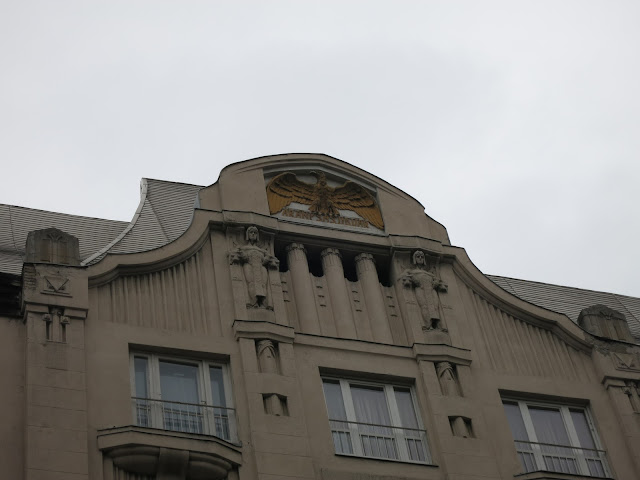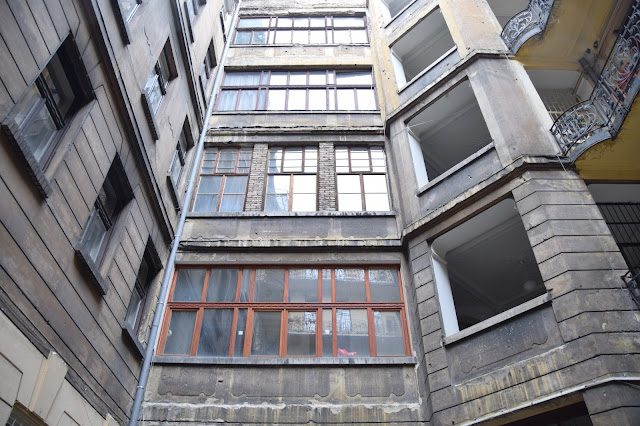In the Darkroom by Susan Faludi is a biographical account of her father. Faludi is a Pulitzer prize winning journalist and noted feminist writer. In this account, Faludi interrogates the slippery and often dangerous notions of identity, especially (as in the case of Susan's father) identities that include gender, religion, and nationality. The book begins when Susan, after being out of contact with her father for twenty plus years, receives an email announcing that her father, Steven Faludi, has undergone gender transformation surgery and is now Stephanie Faludi. Her father is in his seventies, living in Budapest when the news arrives.
Susan Faludi's memories of her father are of an aggressive, often bullying man. These memories include her father brutally attacking a man her mother was seeing after Steven had left his family and Steven threatening Susan as a child. When her father emails her asking her to come to Budapest and perhaps write the story of her father's life, she hesitantly resumes contact.
In the Darkroom details the story of Susan Faludi's attempts to understand and connect or perhaps reconnect with her father--now Stephanie. It takes place over about 10 years, from 2004 when, as she says, she "set out to investigate someone I scarely knew, my father," to her father's death in 2015. On one level, the book narrates the story of their 10-year renewed relationship; on another level, it narrates the story of her father's life, as Susan comes to understand it.
This extraordinarily complex and beautifully written book explores ar least three contradictions in her father's sense(s) of identity. One is gender. As a feminist, Susan understand gender as a socially constructed category that exists on a continuum, rather than as a binary M/F. However, Stephanie, and most of her transgender friends, believe that once they have remade themselves women (especially those who undergo gender transformation surgery), they are changed in an essential way. Stephanie now lives as a "lady," concerned with clothes and being pretty, and happy now that people "help" her because she is a woman. Life is much easier, she insists.
The second problematic category for Susan and Stephanie is that Steven Faludi was Jewish. Born Istvan Friedman in Hungary, he survived the Arrow Cross in Budapest by hiding and also by masquerading as an Arrow Cross member. In one noteworthy incident, he marches as Arrow Cross into the Yellow Star house where his parents reside and orders them out before deportation. There is little or no Judaism in the house Susan remembers growing up in. But one night when they end up at a Rosh Hashonah service in Budapest, it is Stephanie who knows the prayers and who saves the prayer book so she can say Kaddish for her parents.
And all this is made even more problematic because Stephanie has now reclaimed Hungarian citizenship and lives, apparently with pleasure, within a country that is increasingly anti-Semitic and homophobic. Susan argues with her father over all this. As the book unfolds we see the arguments and the truces. They did not achieve a "laying down of arms," she says, but did seem to arrive "at an understanding, even a closeness."
I read this in Budapest, not that far from where Stephanie lived. (I am in Pest; Stephanie was in Buda.) Stephanie died in 2015, the year I began extended visits to Budapest. Like Stephanie, I love Budapest, but like Susan I understand that the "beautiful parts" exist within a country that has a terrible history and some terrible parts of its present.
One of the pieces of her past Stephanie held onto were deeds to two properties her father owned before the war, properties that were never returned to her despite the round of claims for restitution so many others have also made. When she died, Susan found the deeds along with a sheaf of birth certificates of dead relatives and a few letters in the safe which held the "important things" Susan would inherit after her father's death. One of the houses is on Raday utca (street), where I live next to in Budapest. This house, 9 Raday utca, is a beautiful secession house built in 1909 by the famed architect Gyula Fodor. Fodor is known for incorporating sculpture on his buildings, and the picture at the top of this blog post is a sculptural piece prominent on the facade: a female figure (probably Hungaria, or more simply a mother), sheltering her children who are themselves holding up tokens of art--sculpture and books. There is also another statue, see below, this one at the very top of the building and covered by a protective screen, where the figure holds the miniature of a house.

At the very end of her life, Stephanie recedes into dementia which Susan sees as "an onrush of all she had experienced, suffered, fled. The paranoia and hallucinations afflicting her were rooted in the realities of her past, the histories she had walled off." Steven lost his family, his home, his religion, and his country. Like Anderson's "ugly duckling," (a story Stephanie loves), Stephanie has changed. But like the house on Raday utca, the past remains--even if its inhabitants are no longer the same.
#InTheDarkroom
#SusanFaludi
#RadayUtca





















































































